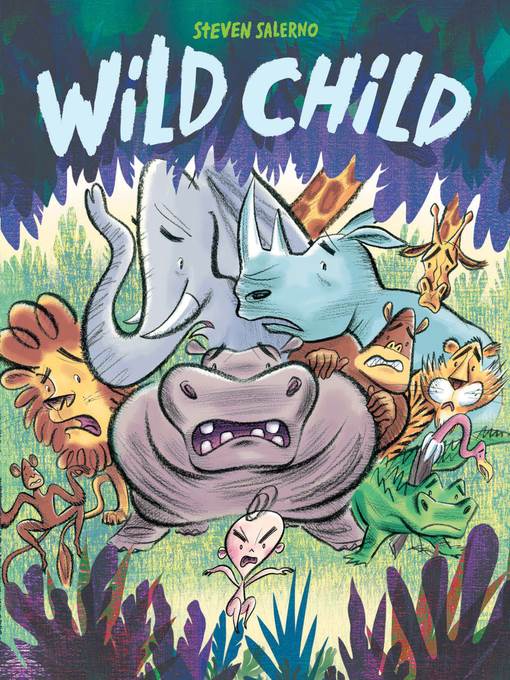
Wild Child
کتاب های مرتبط
- اطلاعات
- نقد و بررسی
- دیدگاه کاربران
نقد و بررسی

May 25, 2015
“The jungle can be a scary place,” begins Salerno, and his battle royale of an opening scene proves it, as an elephant and rhino point sharp tusks at each other, a gorilla swats at a vulture, snakes and leopards hiss, and a lion and crocodile leap into the fray. But the arrival of a “wild child” who is “Constantly grabbing, pinching, and pooping!” and “Forever pulling, kicking, and crying!” has these kings and queens of the jungle desperate to soothe the ill-tempered babe. Working in mixed-media, Salerno uses slashes of black crayon to outline his characters—it’s perhaps the perfect medium for conveying unadulterated rage, either human or animal. With fierce frowning eyebrows, a scribble of hair, and not a stitch of clothing, the wild child looks like a feral cousin to the star of Salerno’s Harry Hungry!; the animals’ attempts to sooth the child with bugs (the anteater) or roaring (the lion) only fuel its anger. Forceful writing and the improbable gracefulness Salerno bestows on this kicking, biting, punching machine make this a furiously fun read. Ages 4–8.

June 15, 2015
A two-toothed toddler needs no wolf suit to be wildest thing of all in this high-volume prequel to a certain well-known classic. Salerno crowds broad, bright, cartoon jungle scenes with huge animals who growl, roar, stomp their feet, and gnash their teeth with thrilling ferocity-until put to panicked flight by the arrival of a new resident. Yes, it's a wild child: "Constantly grabbing, pinching, and pooping! Forever pulling, kicking, and crying! Always biting, hitting, and howling!" Can it be tamed? Not by feeding it tasty leaves or ants, not by placing it in a cozy treetop or a mud wallow, and certainly not by simply roaring at it. Then Gorilla tries a different approach, and after a banana, a wash, and a quiet cuddle, the young terror is transformed into a "mild child." (For a while, anyway.) Drawn diaperless but, thanks to discreet angles and the occasional well-placed leaf, indeterminate of gender, the tiny Tarzan (or maybe Sheena) is last seen snoozing peacefully in a bush following a post-nap wild rumpus with a host of now-smiling beasts. A salutary lesson in jungle parenting. (Picture book. 3-6)
COPYRIGHT(2015) Kirkus Reviews, ALL RIGHTS RESERVED.

September 1, 2015
PreS-Gr 2-Lions, rhinos, and crocs are no match for a certain fierce creature that parents (and older siblings) will instantly recognize: an unhappy human baby. Salerno pairs rhythmic language with action-packed images to show the naked, pink-skinned baby terrorizing the jungle, followed by each animal's doomed attempt to soothe, feed, or entertain this little beast. A full-spread close-up of the baby's howling face shows just how spectacularly the animals have failed, and it takes a thoughtful gorilla to finally coax the baby into a nap. All of the animals, including the baby, have cartoonishly big heads and thick, oversize eyebrows used for expressive effect. Bright, sketchy illustrations in crayon, gouache, and digital media will work for group read-alouds or one-on-one sharing. VERDICT Wild children and their caregivers will get a kick out of this jungle romp.-Sarah Stone, San Francisco Public Library
Copyright 2015 School Library Journal, LLC Used with permission.

























دیدگاه کاربران